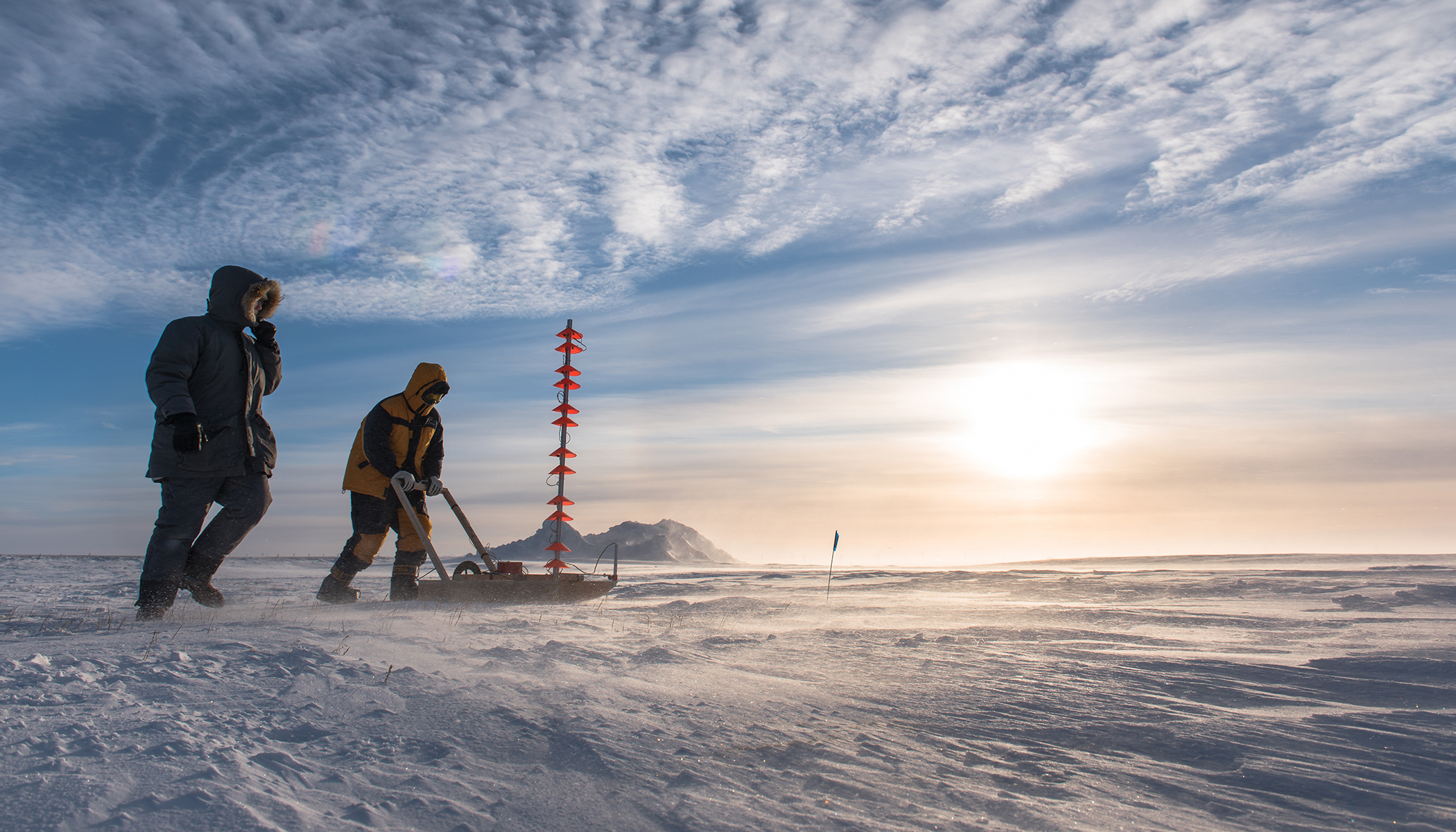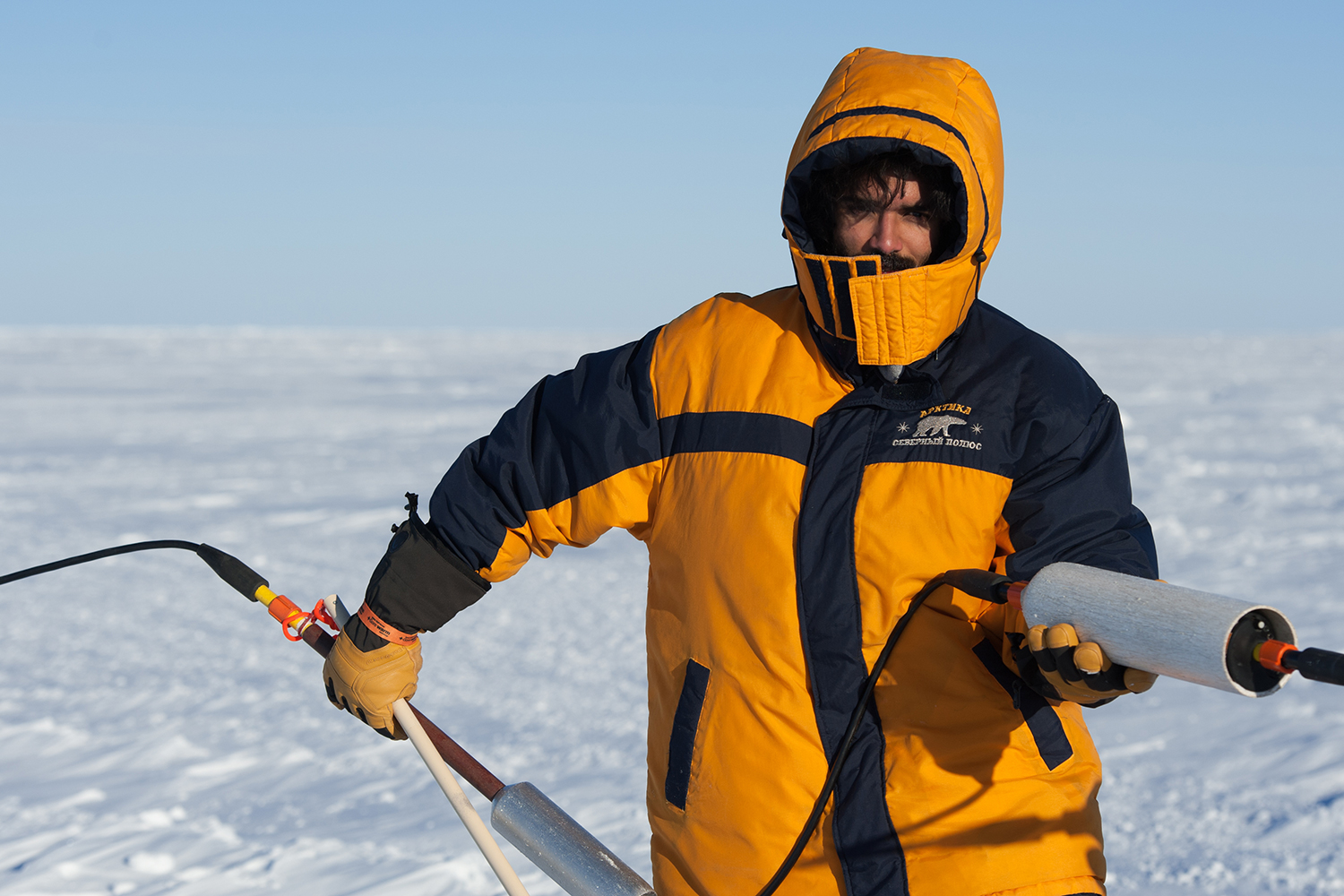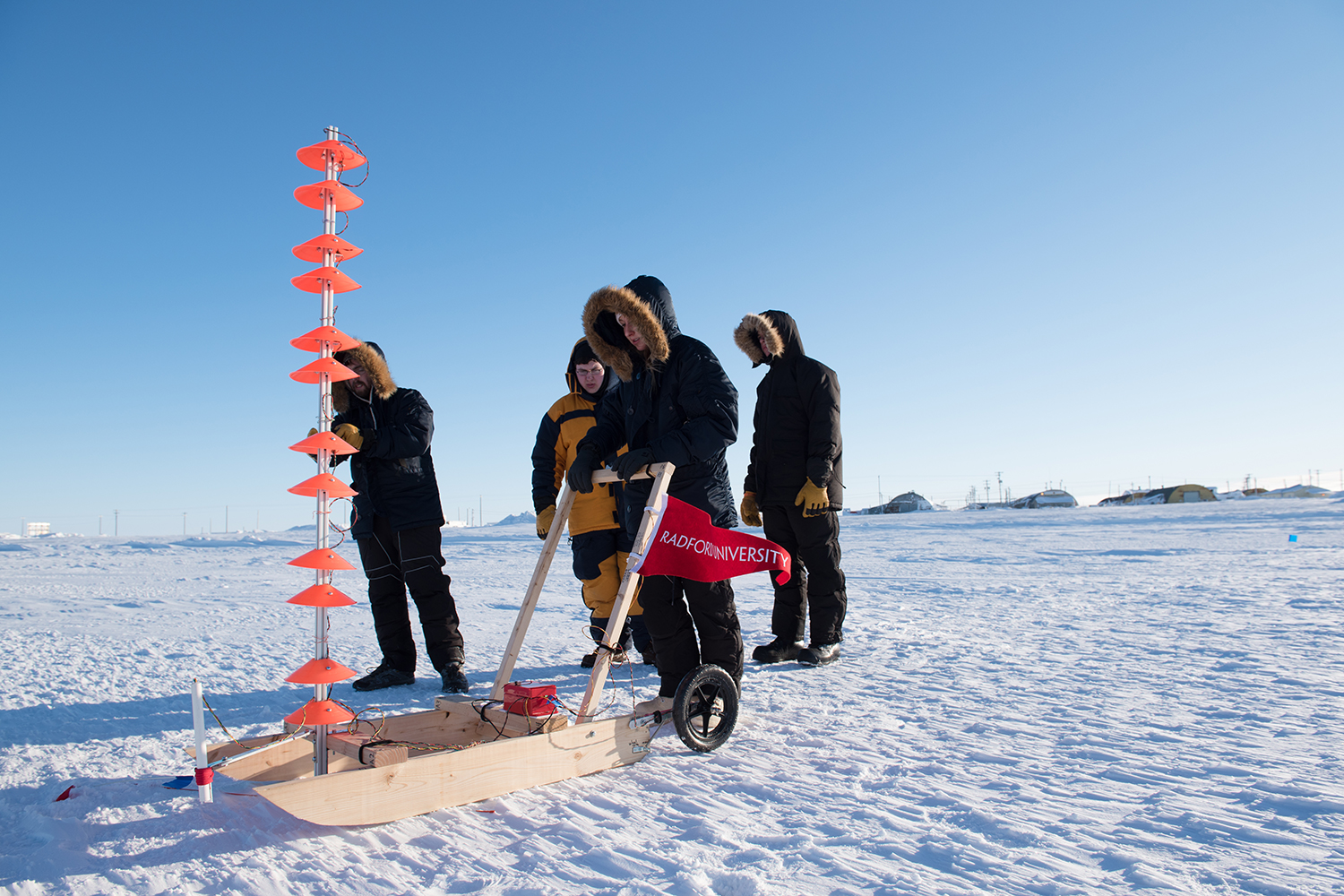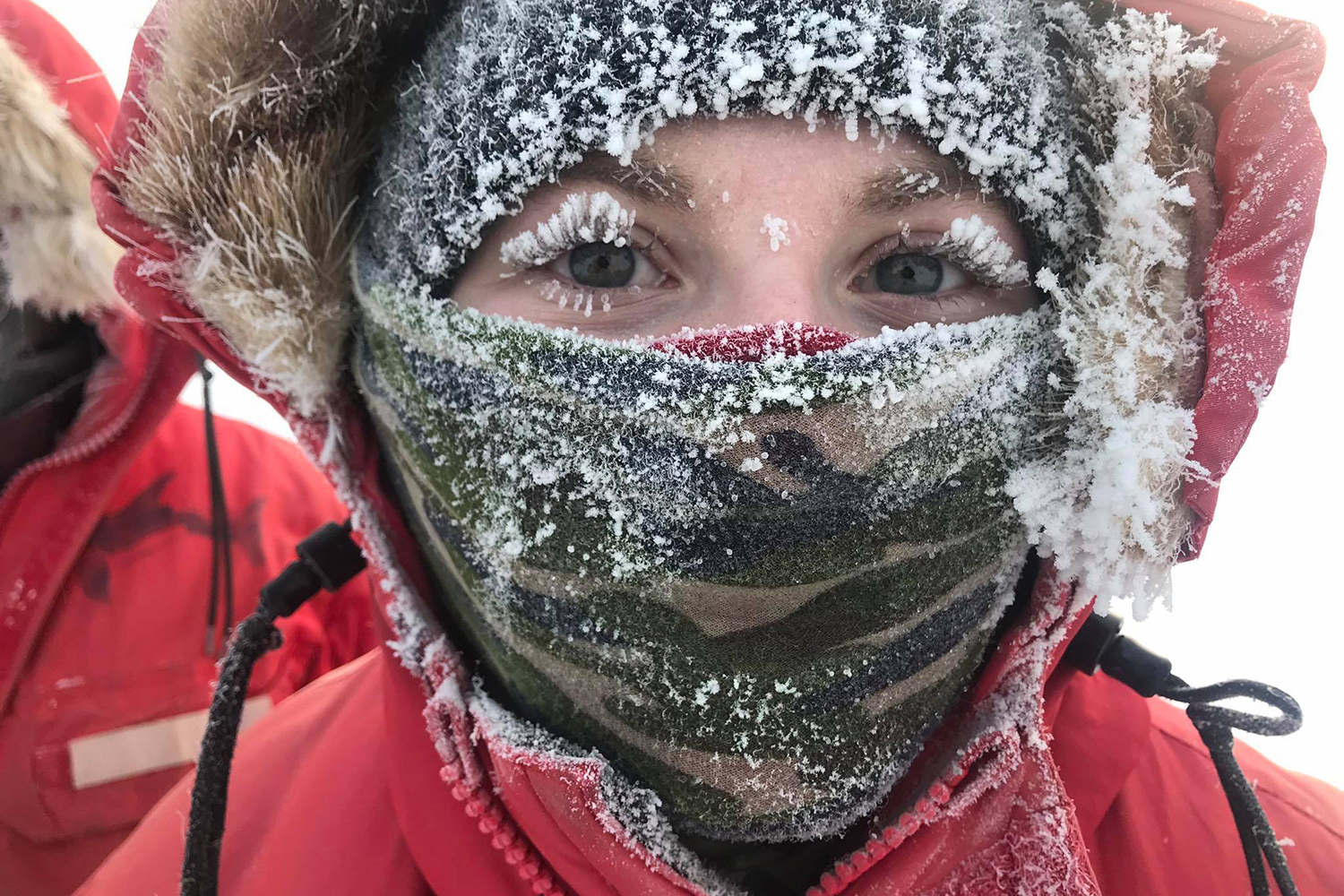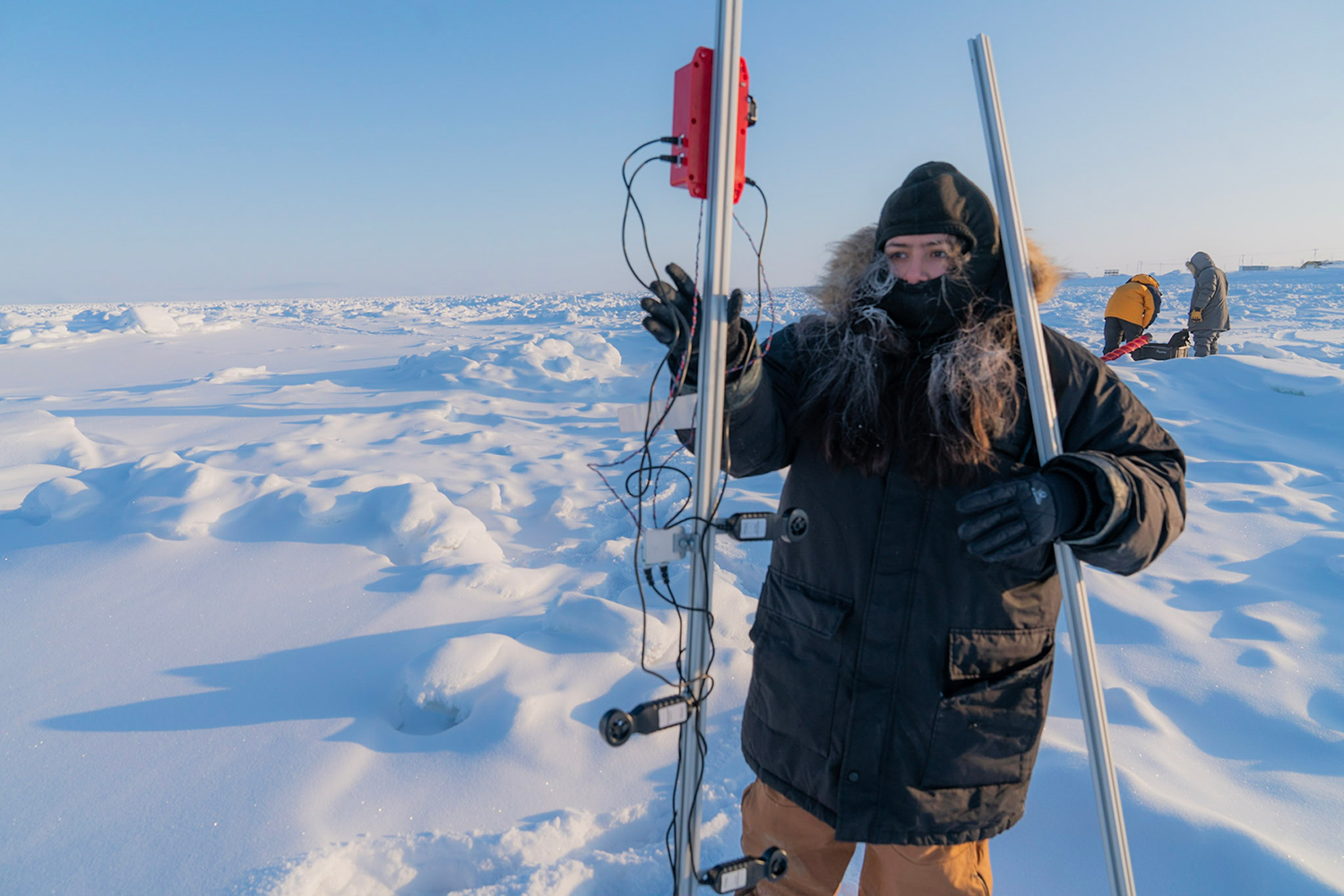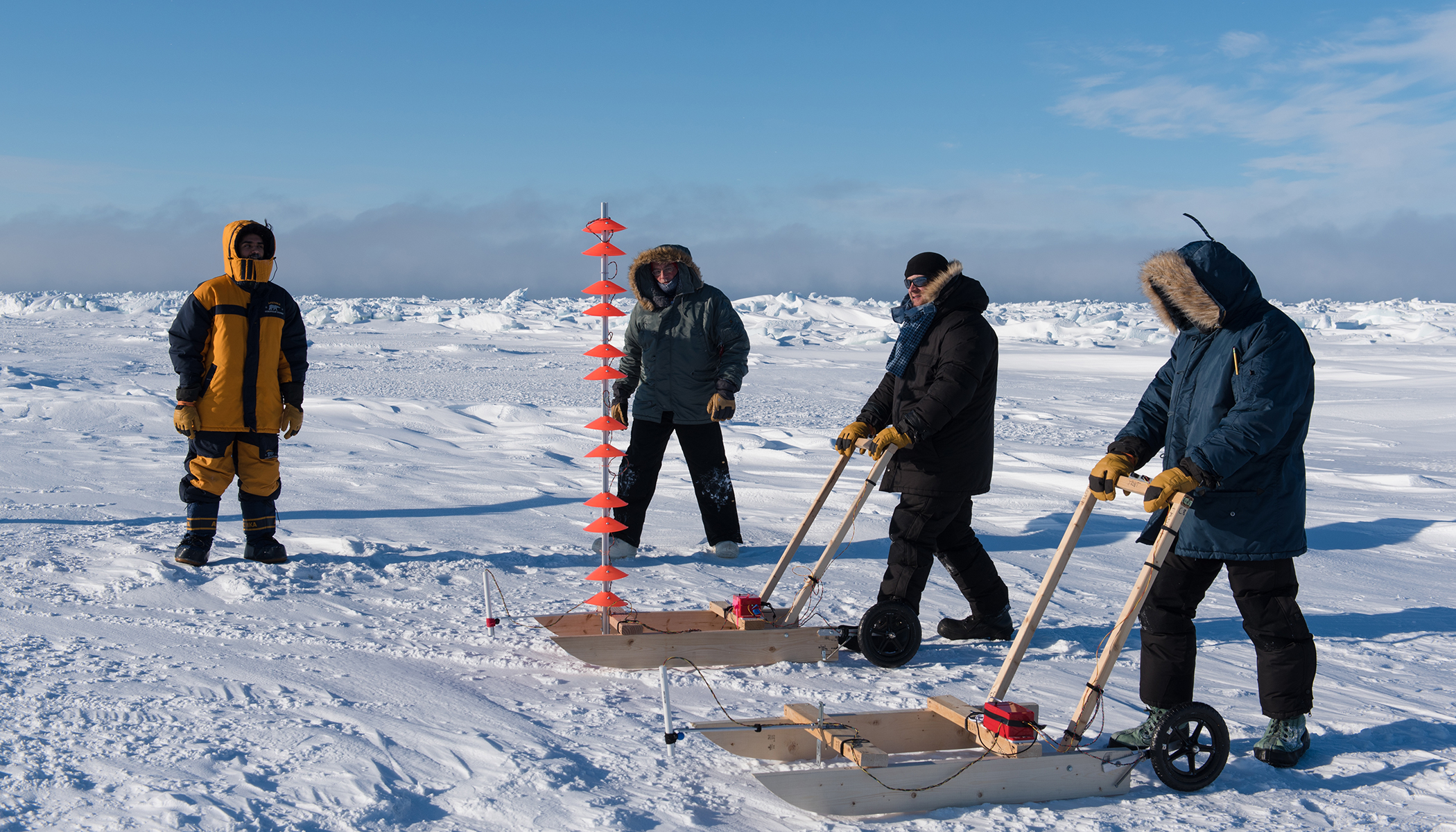Radford University
Alaska Geophysics
Arctic Adventures
Imagine spending up to two weeks in the northernmost town in the United States, where wind-chilled temperatures can reach -50 degrees Fahrenheit and aurora borealis dance across the sky.
Rhett Herman, Ph.D., professor of physics and adjunct professor of geology, offers students the opportunity to conduct research in Utqiagvik, Alaska.
